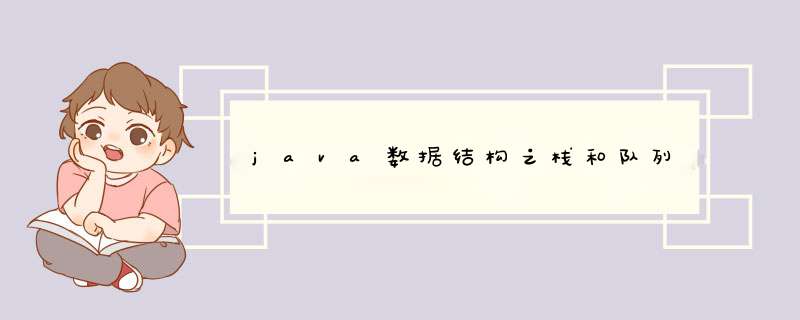
java数据结构之栈和队列一、栈二、队列三、标准库中的栈和队列
一、栈核心思想:后进先出
- 顺序表实现:
public class MyStack1 {
private int[] data = new int[100];
private int size = 0;
入栈:尾插
public void push(int val){
if (size >= data.length){
return;
}
data[size] = val;
size++;
}
出栈:尾删(返回值就是被出栈删除的元素)
public Integer pop(){
if (size == 0){
return null;
}
//删除栈顶元素
int ret = data[size-1];
size--;
return ret;
}
取栈顶元素:根据下标获取元素
public Integer peek(){
if (size == 0){
return null;
}
return data[size-1];
}
- 链表实现
class Node{
int val;
Node next;
public Node(int val) {
this.val = val;
}
}
public class MyStack2 {
//此处以不带傀儡节点的链表为例
private Node head = null;
}
入栈:头插
public void push(int val){
//step1:创建新节点
Node newNode = new Node(val);
//2、把新节点进行头插,由于当前链表是不带傀儡的,
// 所以需要判断当前链表是非空还是空
if (head == null){
head = newNode;
return;
}
newNode.next = head; //让 newNode 指向原头结点
head = newNode; //更新 head
}
出栈:头删
public Integer pop(){
//进行头删,若是空链表
if (head == null){
return null;
}
//只有一个节点的链表
if (head.next == null){
int ret = head.val;
head = null;
return ret;
}
// 其他一般情况
// java中节点的删除主要看该对象是否有引用指向他,
// 若是无引用指向该对象,则表示该对象被删除(GC垃圾回收)
int ret = head.val;
head = head.next;
return ret;
}
取栈顶元素:取头结点
public Integer pip(){
if (head == null){
return null;
}
return head.val;
}
二、队列
核心思想:先进先出
- 顺序表(数组)实现:
入队列:尾插
public boolean offer(int val){
//队列满了,也可以实现扩容逻辑
if (size == data.length){
return false;
}
//队列没满的情况下可以把新元素放到tail对应的下标上
data[tail] = val;
tail++;
//一旦tail到达队列的末尾就要让其从头开始
//方法1:
if (tail == data.length){
tail = 0;
}
//方法2:
tail = tail % data.length;
size++; //更新 size 的值
return true;
}
出队列:尾删
public Integer poll(){
if (size == 0){
return null;
}
int ret = data[head];
head++; //更新 head 的位置
if (head == data.length){
head = 0;
}
size--;
return ret;
}
取队顶元素:根据下标获取元素
public Integer peek(){
if (size == 0){
return null;
}
return data[head];
}
- 链表实现
//链表实现队列
public class MyQueue {
//创建链表
static class Node{
int val;
Node next;
public Node(int val) {
this.val = val;
}
}
//创建一个链表并记录其头结点和尾结点
private Node head = null;
private Node tail = null;
}
入队:尾插
返回值表示是否插入成功
public boolean offer(int val){
//创建新节点
Node newNode = new Node(val);
//若是空链表,直接让 head 和 tail 指向新节点即可
if (head == null){
head = newNode;
tail = newNode;
return true;
}
//一般情况的尾插
tail.next = newNode;
tail = tail.next;
return true;
}
出队:头删
public Integer poll(){
if (head == null){
return null;
}
int ret = head.val;
if (head.next == null){
return ret;
}
head = head.next; //删除头结点
return ret;
}
取队首元素:获取头结点
public Integer peek(){
if (head == null){
return null;
}
return head.val;
}
三、标准库中的栈和队列
标准库中,栈(Stack)是一个类,可以直接使用;队列(Queue)是一个接口,不能直接实例化,需要创建对应的子类。Stack 继承自 Vector。
欢迎分享,转载请注明来源:内存溢出

 微信扫一扫
微信扫一扫
 支付宝扫一扫
支付宝扫一扫
评论列表(0条)